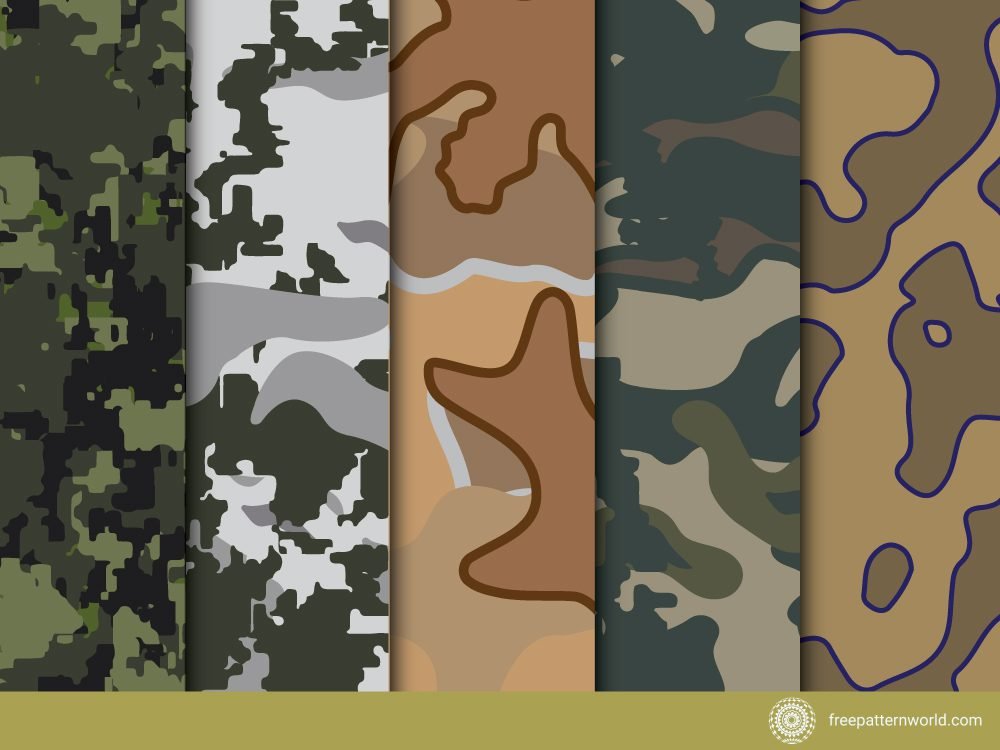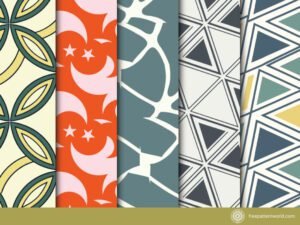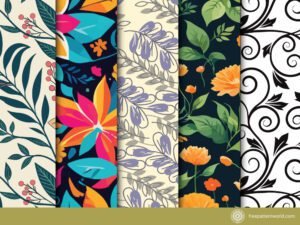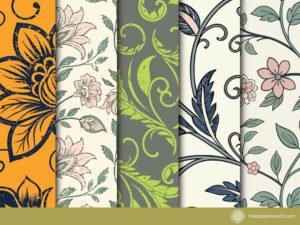
Table of Contents
Introduction
Camouflage patterns have been a universal part of our world for centuries. From the natural adaptations of animals in the wild to the carefully designed uniforms of soldiers on the battlefield, the art of blending in profoundly impacts survival, concealment, and even fashion. In this article, we’ll hunt through into the fascinating world of camouflage patterns, exploring their history, purpose, and the art of nature’s artistry behind their effectiveness.

The Origins of Camouflage
Natural Camouflage
Nature has been the ultimate inspiration for camouflage patterns. Countless species have evolved to match their surroundings as a means of survival. Consider the chameleon, which can change its skin color to blend seamlessly into its environment, or the leaf-tailed gecko, which looks like a decaying leaf. These adaptations are the result of millions of years of evolution, allowing animals to hide from predators and ambush prey effectively.
Early Human Use
Humans, too, have employed camouflage since ancient times. Early hunters and gatherers often used natural materials such as animal hides, leaves, and mud to conceal themselves during hunting or warfare. This rudimentary form of camouflage laid the foundation for more sophisticated techniques that would emerge in later centuries.
Military Camouflage: A Shifting Landscape
World War I: The Birth of Modern Camouflage

The modern era of camouflage design owes much of its evolution to the trench warfare of World War I. Soldiers on both sides faced the challenge of remaining concealed in the elaborate trench systems that stretched across the Western Front. To counteract this vulnerability, military leaders began to experiment with different camouflage techniques, giving birth to the concept of “disruptive patterns” that aimed to break up the human silhouette against the background.
World War II: A Spectrum of Camouflage
World War II saw a proliferation of camouflage patterns as various nations developed their unique designs. The German Wehrmacht introduced the iconic “Flecktarn” pattern, while the British used the “DPM” (Disruptive Pattern Material) camouflage. The United States, too, developed designs like the “Duck Hunter” and the “Frog Skin” camo. These patterns not only concealed soldiers but also identified them as members of their respective units.
Modern Military Camouflage

In contemporary warfare, military camouflage has evolved into highly specialized designs. These patterns often consider the specific environments in which soldiers operate, including desert, woodland, and urban settings. Advanced materials and technologies, such as infrared-defeating patterns and reflective coatings, have made modern military camouflage more effective than ever before.
The Art of Camouflage in Fashion
Camouflage as a Fashion Statement
The influence of military camouflage patterns on fashion is undeniable. Camo print first gained popularity in the civilian world during the 1960s and 1970s, often associated with anti-establishment movements and subcultures. Over the years, it has transitioned from being a symbol of rebellion to a mainstream fashion statement.

Camouflage in Streetwear
Streetwear brands have embraced camouflage, incorporating it into clothing, accessories, and even sneakers. It has become a symbol of urban style and individuality, blending fashion, music, and youth culture. Celebrities and influencers regularly sport camouflage clothing, reinforcing its status as a fashionable choice.
The Camouflage Revival
Camouflage patterns have seen a resurgence in recent years. High-end fashion designers like Valentino, Off-White, and Balenciaga have incorporated camouflage into their collections, further legitimizing their place in the fashion world. This revival highlights the enduring appeal of camo as a design element that can be both practical and stylish.
Camouflage in Everyday Life
Hunting and Outdoor Activities
Camouflage is widely used by hunters and outdoor enthusiasts to reduce their visibility to game animals or birds. Camouflage clothing, gear, and even blinds help hunters get closer to their quarry without being detected. This not only enhances the hunting experience but also contributes to ethical and sustainable hunting practices.
Military and Law Enforcement
Military and law enforcement agencies continue to rely heavily on camouflage patterns to protect their personnel and equipment. Camouflage not only conceals soldiers and vehicles but also serves as a symbol of identity and unit cohesion.

Wildlife Conservation
Camouflage patterns are also used in wildlife conservation efforts. Researchers and photographers often use specialized camouflage clothing and equipment to observe and document animals in their natural habitats without causing disturbance. This approach allows for a deeper understanding of wildlife behavior and habitat usage.
Conclusion
Camouflage patterns have come a long way from their humble beginnings as natural adaptations in the animal kingdom. They have evolved into a multi-faceted concept with applications in military strategy, fashion, science, and everyday life. Whether it’s helping soldiers blend into the battlefield, making a fashion statement on city streets, or allowing animals to thrive in their natural habitats, the art and science of camouflage patterns continue to play a significant role in our world. As technology advances and our understanding of camouflage deepens, we can only expect this timeless concept to continue shaping our lives in unexpected ways.
Download other free pattern designs from freepatternword and freepik.
Support Us with Crypto!
If you enjoy our content and want to help keep this site running, you can support us with crypto. Your support is appreciated!
USDT(TRC20): TSW1iyNhUHiGvc2VdQvZqkqgCTGvdrnsY7
Bitcoin: 38ZHQNkrbZKYJhbLeFZiCrQdR3C2ddtAzV
ERC-20: 0xe1BD9D788256905c6efFd38333A3fF1b6DE3ce67
1. What is a camouflage pattern?
A camouflage pattern is a design or color scheme that helps an object or organism blend into its surroundings, making it less visible to predators, enemies, or prey.
2. Where are camouflage patterns commonly found in nature?
Camouflage patterns are prevalent and can be observed in various animals and insects, such as chameleons, leaf-tailed geckos, and stick insects. These patterns help these creatures avoid detection by predators or enable them to ambush prey effectively.
3. How did camouflage patterns evolve in the military?
Camouflage patterns in the military originated in World War I when soldiers in trenches needed effective ways to conceal themselves. This led to the development of disruptive patterns that aimed to break up the human silhouette against the background. Camouflage designs have since become increasingly sophisticated to suit different environments and terrains.
What are some famous military camouflage patterns?
There are numerous famous military camouflage patterns, including the German “Flecktarn,” British “DPM” (Disruptive Pattern Material), and the various patterns used by the United States, such as “Duck Hunter” and “Frog Skin” camouflage.
5. How has camouflage influenced fashion?
Camouflage patterns gained popularity in fashion during the 1960s and 1970s, often associated with counterculture movements. They have since become a mainstream fashion statement, appearing in clothing, accessories, and even high-end designer collections.
6. Are camouflage patterns still relevant in modern military contexts?
Yes, camouflage patterns remain highly relevant in modern military operations. They are continually adapted to suit specific environments, including desert, woodland, and urban settings. Advanced materials and technologies have made modern military camouflage more effective than ever.
7. What are the key principles of effective camouflage?
Effective camouflage often relies on principles like disruptive coloration (using contrasting colors and shapes to break up outlines), background matching (blending into the environment), counter-shading (having darker colors on top and lighter colors on the bottom), and mimicry (imitating other objects or organisms).
8. How is camouflage used in outdoor activities like hunting?
Camouflage is widely used in hunting to reduce the visibility of game animals. Hunters use camouflage clothing, gear, and blinds to blend into their surroundings, increasing their chances of getting closer to their prey without being detected.
9. How does camouflage benefit wildlife conservation efforts?
Camouflage patterns and specialized camouflage equipment are often used in wildlife conservation to observe and document animals without causing disturbance. This approach allows for a deeper understanding of wildlife behavior and habitat usage.
10. Are there ongoing developments in the science of camouflage?
es, the science of camouflage continues to evolve with advancements in technology and our understanding of visual perception. Researchers are developing new materials and techniques to create more effective and adaptive camouflage patterns for various applications, from military to wildlife conservation.




